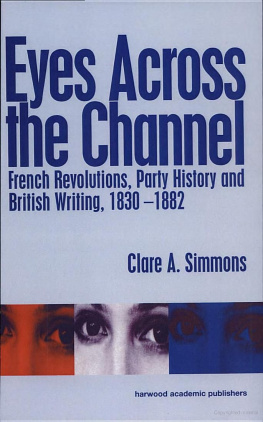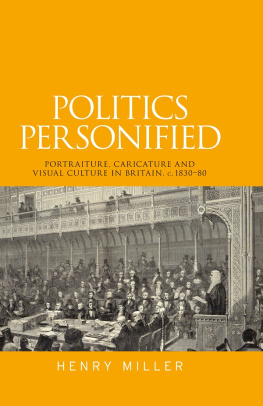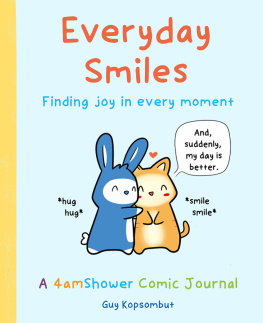IN MEMORY OF J.M.S. AND O.C.A.S.
First published 2000 by Ashgate Publishing
Reissued 2018 by Routledge
2 Park Square, Milton Park, Abingdon, Oxon OX14 4RN
711 Third Avenue, New York, NY 10017, USA
Routledge is an imprint of the Taylor & Francis Group, an informa business
Copyright Sam Smiles 2000
The author has asserted his moral rights.
All rights reserved. No part of this book may be reprinted or reproduced or utilised in any form or by any electronic, mechanical, or other means, now known or hereafter invented, including photocopying and recording, or in any information storage or retrieval system, without permission in writing from the publishers.
Notice:
Product or corporate names may be trademarks or registered trademarks, and are used only for identification and explanation without intent to infringe.
Publisher's Note
The publisher has gone to great lengths to ensure the quality of this reprint but points out that some imperfections in the original copies may be apparent.
Disclaimer
The publisher has made every effort to trace copyright holders and welcomes correspondence from those they have been unable to contact.
Phototypeset in Palatino by Intype London Ltd
A Library of Congress record exists under LC control number: 00029979
ISBN 13: 978-1-138-73713-6 (hbk)
ISBN 13: 978-1-315-18555-2 (ebk)
At Ashgate Publishing I would particularly like to thank Pamela Edwardes, who first discussed this project with me and provided constant support and encouragement, and Sue Moore, the House Editor, who oversaw its production so capably. As well as Anthony Raven, my copy-editor at Ashgate Publishing, whose comments materially improved this book, Stephanie Pratt and Michael Rosenthal were kind enough to read the first draft in manuscript. I hope they will recognise their contributions; the faults that remain are entirely my own. I would also like to thank Jos Hackforth-Jones for giving me the opportunity to present some aspects of this research in a seminar at Richmond, The American University in London, in 1998. was originally delivered as a paper at the symposium held at the Institute of Historical Research (University of London) in conjunction with the Royal Academy exhibition The Great Age of British Watercolours, 1750-1880 (1993). My thanks to Michael Rosenthal, who convened my session, and to Andrew Hemingway, the Discussant, for their comments on that occasion. Eric Shanes, David Griffiths, Celina Fox and John Gage all provided help of one sort or another in tracking down photographs. My thanks to them and to the museums, galleries and libraries who provided the images. I am grateful to the University of Plymouth for study-leave in the Spring Term, 1998, and to my colleagues in the Arts Research Seminar series who provided valuable commentary on aspects of this work as it developed. I owe a special debt of thanks to Bill Smiles for his company, his conversation and his cooking.
The visual display of knowledge is all around us. Flicking through a children's encyclopaedia, I notice a visual diagram of the internal combustion engine, the anatomy of the digestive tract, a cross-section of geological strata and the workings of the offside rule, plates distinguishing ox-eye from leopardsbane, dandelion from hawkbit, different varieties of fritillary or hairstreak butterflies, marsh tits from willow tits. For many of our enquiries about the natural and man-made world explanatory images like these can be provided, refining our perception and understanding. There is reassurance in their clarity and economy of presentation. This seems to be something which only eye-centred explanations can secure. The illustrative image appears to be emphatic and unambiguous where even the most scrupulous descriptive text can be misunderstood.
We are so used to these visual devices that we take them almost entirely for granted. But we are, of course, indebted to a tradition of illustration which has much earlier origins. How information is to be visually displayed, such that its utility is enhanced and its ambiguity reduced, is a problem which has a surprisingly long history. This book examines the ways in which very different visual fields might be said to have shared certain working assumptions concerning the truth of representation. It concentrates particularly on prints, more especially those prints which were designed to convey information, be it anatomical, antiquarian, architectural, social or topographical. In doing so, it is designed to retrieve a serious consideration of the utilitarian function of images, in contrast to their customary aesthetic apprehension.
Such a study as this cannot hope to be comprehensive. For example, I do not intend to offer a sustained investigation of the economics of publishing, relying instead on the assumption that if something got printed then it was, at least initially, a commercially viable enterprise. Likewise, I have not attempted to recapitulate the history of British art in the period covered by this book, plotting instead an erratic course which leaves many well-known examples unvisited. My central concern has been more modest: to establish how self-consciously certain artists, illustrators and publishers in the eighteenth and early nineteenth centuries considered their respective crafts and actively discussed the place of images as cognitive devices.
When thinking about the utility of images in this period we might usefully bear in mind two theoretical and historical positions. Looked at positively, printed images can be seen as easily disseminated compendia of data. In that respect, this study could be seen as extending certain remarks on visual communication made by William Ivins nearly fifty years ago. Ivins defined prints as 'exactly repeatable pictorial statements', and asserted that the development of print-making had made the transmission of certain sorts of precise information possible for the first time. Without that development, Ivins concluded, modern sciences, technologies, archaeologies and ethnologies could not have developed as they have.
Yet, notwithstanding some evidence of iconophobia in this period, there is testimony enough to buttress the claims Ivins makes for the cognitive breakthrough afforded by images. The artist William Craig, for example, lecturing at the Royal Institution in the early 1800s, is absolutely clear on this.
The influence of drawing, painting, and engraving, on the happiness and welfare of human society, is very considerable, and, perhaps, much greater than it has generally been supposed, unless by some of the most enlightened. They furnish the means of promoting, of multiplying, and of publishing mechanical inventions of every kind; they furnish the means of conveying to the utmost limits of the habitable world, the most valuable information, in any pursuit, and that too in a language which is instantly intelligible; a language which possesses a degree of clearness and precision that words can never reach.
In asserting the benefit of images so positively, Craig is championing visual accuracy against those who saw such fidelity as beneath the dignity of great art, and he is doing so as an inheritor of eighteenth-century debates on images. Throughout his lectures Craig reiterates his fundamental opposition to a generalizing or ideal art which abstracts from the observable world to produce poetic idealizations of nature. For Craig, '... whatsoever becomes an object of vision or sight, becomes immediately specific, and cannot be general. To be evident, to be tangible by human sense, it must have distinct form; it must have length and breadth; and it must have colour of some Correctly understood, then, art is primarily an engagement with the world: its utility is validated by its visual fidelity, its 'truth of imitation'.








